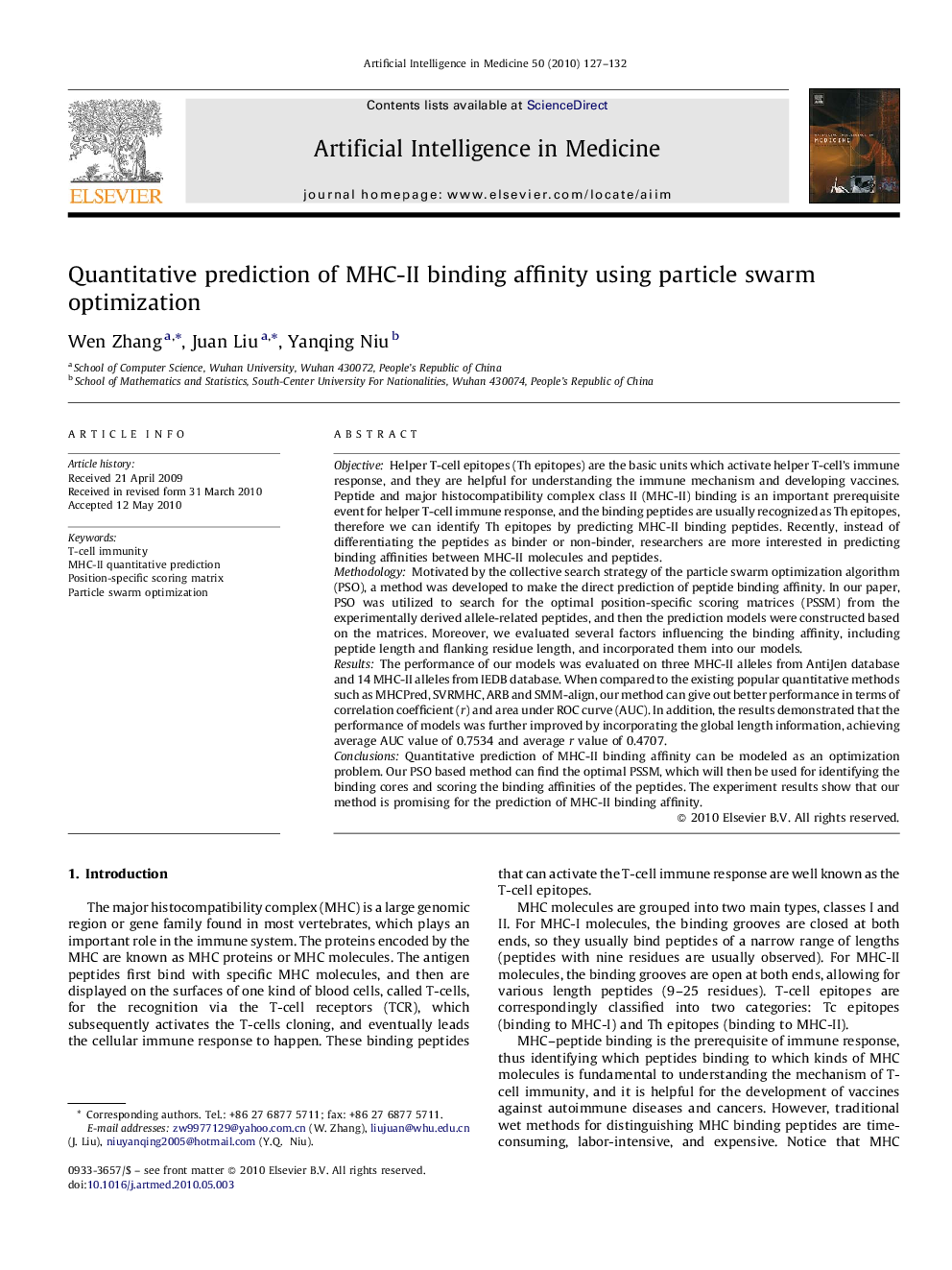| کد مقاله | کد نشریه | سال انتشار | مقاله انگلیسی | نسخه تمام متن |
|---|---|---|---|---|
| 377853 | 658837 | 2010 | 6 صفحه PDF | دانلود رایگان |

ObjectiveHelper T-cell epitopes (Th epitopes) are the basic units which activate helper T-cell's immune response, and they are helpful for understanding the immune mechanism and developing vaccines. Peptide and major histocompatibility complex class II (MHC-II) binding is an important prerequisite event for helper T-cell immune response, and the binding peptides are usually recognized as Th epitopes, therefore we can identify Th epitopes by predicting MHC-II binding peptides. Recently, instead of differentiating the peptides as binder or non-binder, researchers are more interested in predicting binding affinities between MHC-II molecules and peptides.MethodologyMotivated by the collective search strategy of the particle swarm optimization algorithm (PSO), a method was developed to make the direct prediction of peptide binding affinity. In our paper, PSO was utilized to search for the optimal position-specific scoring matrices (PSSM) from the experimentally derived allele-related peptides, and then the prediction models were constructed based on the matrices. Moreover, we evaluated several factors influencing the binding affinity, including peptide length and flanking residue length, and incorporated them into our models.ResultsThe performance of our models was evaluated on three MHC-II alleles from AntiJen database and 14 MHC-II alleles from IEDB database. When compared to the existing popular quantitative methods such as MHCPred, SVRMHC, ARB and SMM-align, our method can give out better performance in terms of correlation coefficient (r) and area under ROC curve (AUC). In addition, the results demonstrated that the performance of models was further improved by incorporating the global length information, achieving average AUC value of 0.7534 and average r value of 0.4707.ConclusionsQuantitative prediction of MHC-II binding affinity can be modeled as an optimization problem. Our PSO based method can find the optimal PSSM, which will then be used for identifying the binding cores and scoring the binding affinities of the peptides. The experiment results show that our method is promising for the prediction of MHC-II binding affinity.
Journal: Artificial Intelligence in Medicine - Volume 50, Issue 2, October 2010, Pages 127–132